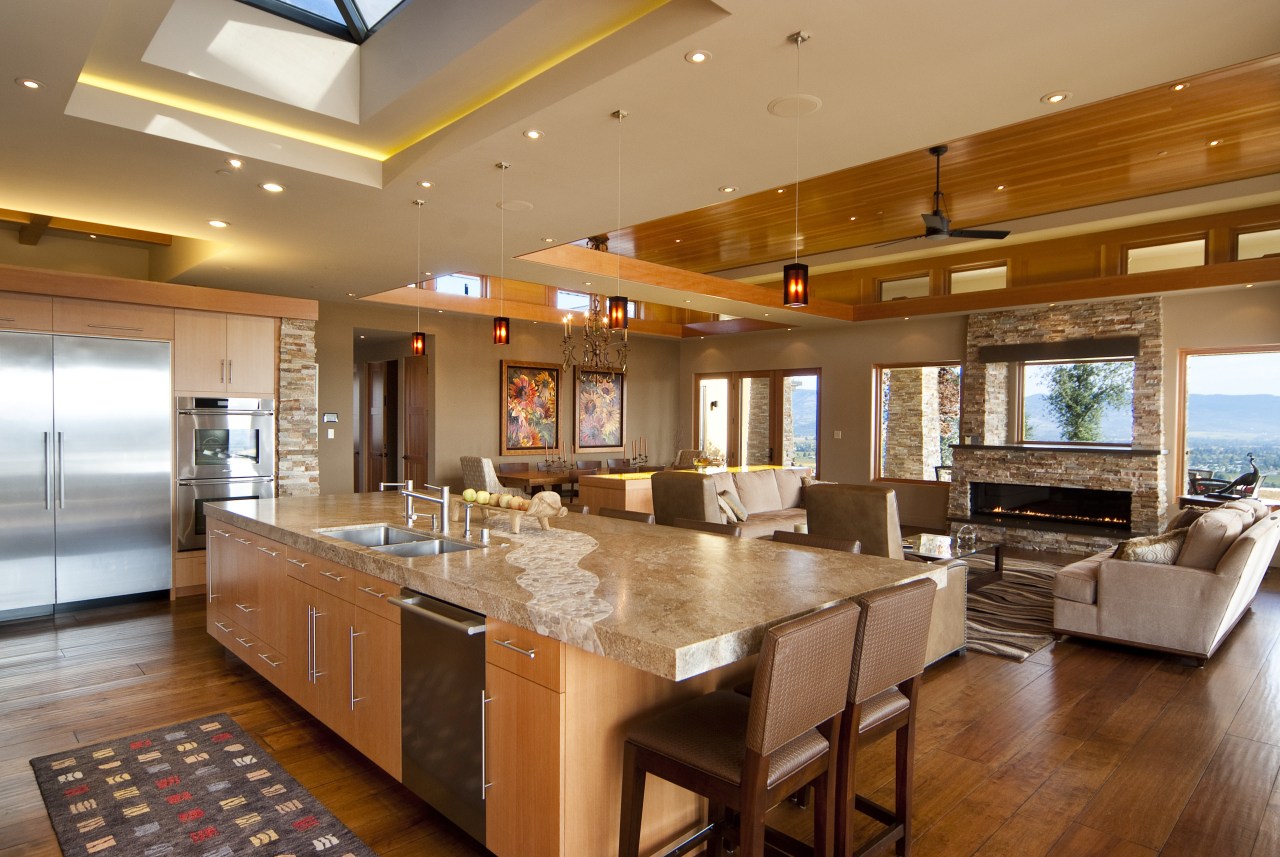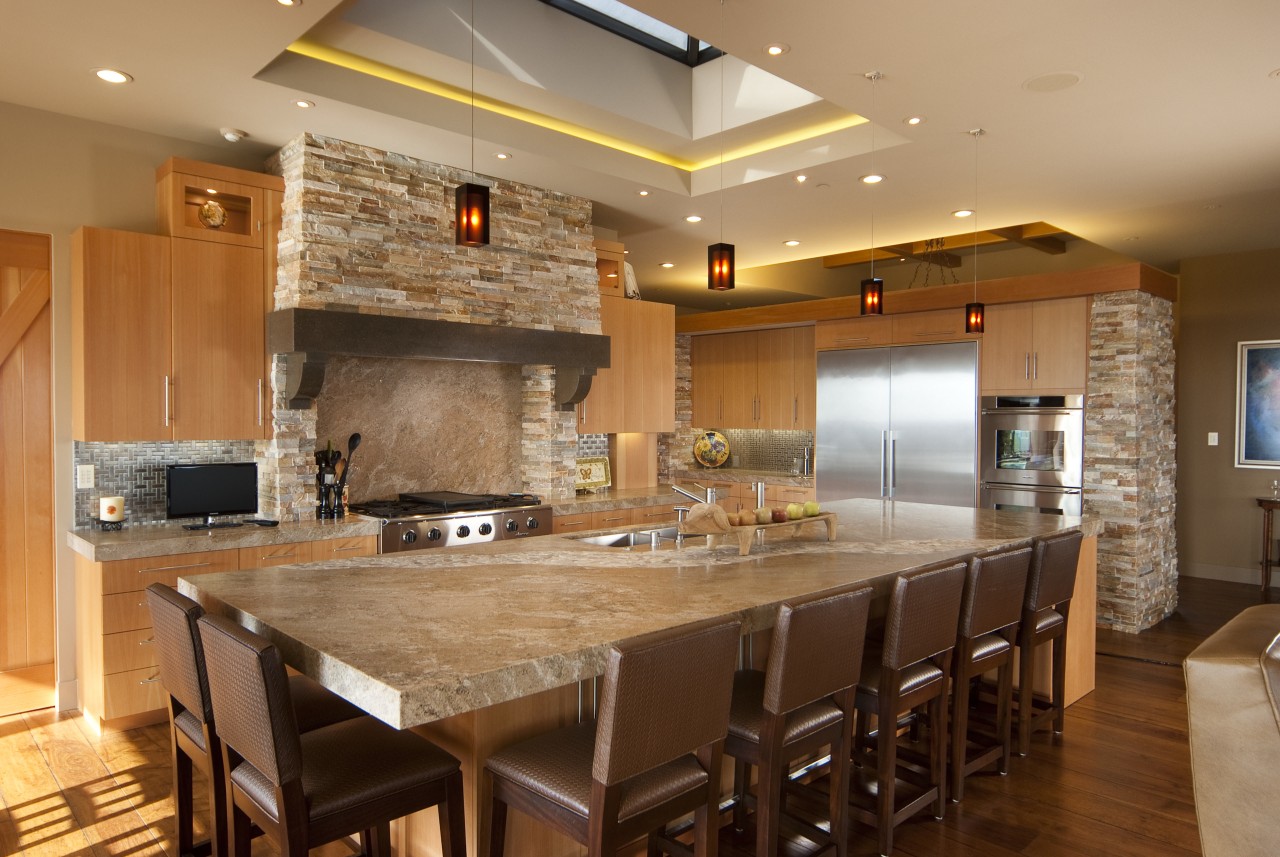Where west commences
a great room that pays homage to the Prairie School
Throughout our history there have been a few architects who have left such an indelible mark on the field that their innovations have struck a chord with peers and laymen alike.
Often touted as America's greatest architect, Frank Lloyd Wright was instrumental in the development of the style we know as the Prairie School, says James McCalligan, principal of McCalligan Architects.
"Wright was a firm believer in what he termed organic architecture', in which the built environment was sympathetically integrated into the natural environment to form a cohesive whole. This idea extended to the very elements within the built environment as well lighting, furniture and even furnishings."
Designed with large open-plan spaces and incorporating regional materials, McCalligan's design for this house draws inspiration from Wright's tenet for holistic architecture.
"Lighting was a particular focus. Clerestory windows admit diffuse natural light, while artificial lighting was used sparingly as an element for delineating interior spaces. Where more direct lighting was required, such as over the kitchen, natural lighting was again key."
Further blurring the line between natural and built, interior and exterior, is McCalligan's incorporation of stonework into the interior design. A feature on the exterior, columnular stone accents help anchor the lighter elements within the space. These accents establish a visual cohesion, and, in the case of the hood and fire surrounds, a symmetrical balance.
"In a design such as this, it is important to me not to have a kitchen that is stand alone, or feels removed from the great room. Placing the hood and fireplace elements on opposite walls, and giving them the same treatment, allows the space to be read as a whole. Similarly, the finish on the cabinets is repeated throughout the house, accentuating the link between rooms."
Central to establishing this visual seamlessness, is McCalligan's treatment of the kitchen space itself.
"The appliances have been placed on the sides, leaving unbroken planes at the front. This has the result of keeping them out of sight from much of the great room, but without hampering access to them everything is conveniently located, but the continuity of the overall look is not compromised."
A butler's pantry houses additional storage and preparation areas and accommodates small appliances such as the toaster and coffee machine on an outer wall.
"The end result is a warm contemporary space, with a simple design that maximizes the view. Diffused light adds a soft ambience enhanced through an architectural vernacular that places equal emphasis on the built and natural environments," says McCalligan.
Credit list
Interior designer
Builder
Cabinetry
Countertops
Blinds
Kitchen sink
Refrigeration and dishwasher
Kitchen designer
Cabinet company
Stonework
Flooring
Lighting
Backsplash
Faucets
Ventilation
Coffee station
Story by: Justin Foote
Home kitchen bathroom commercial design
At one with the Amazon
Contrast and connection
Masculine meets mixed use











